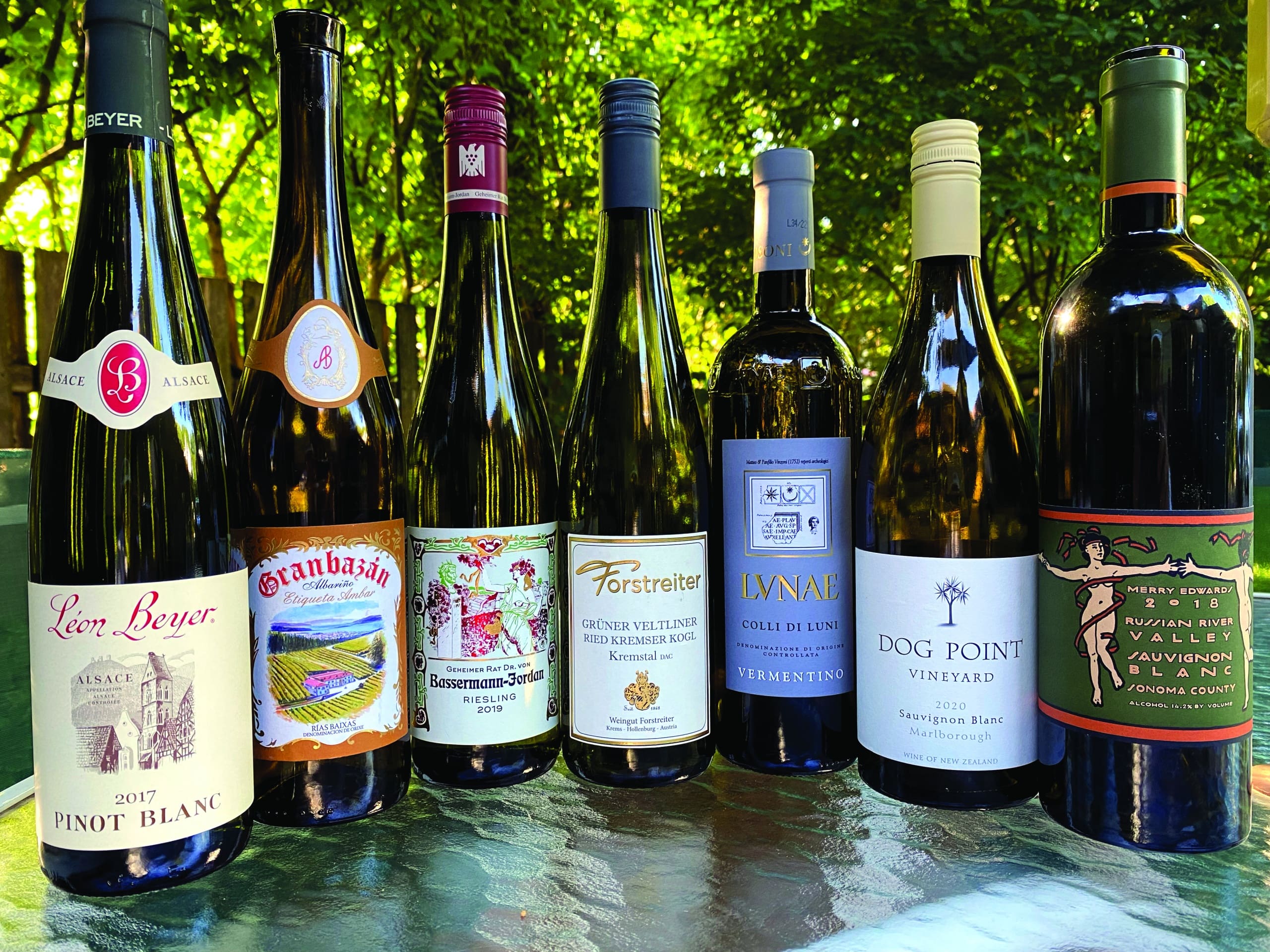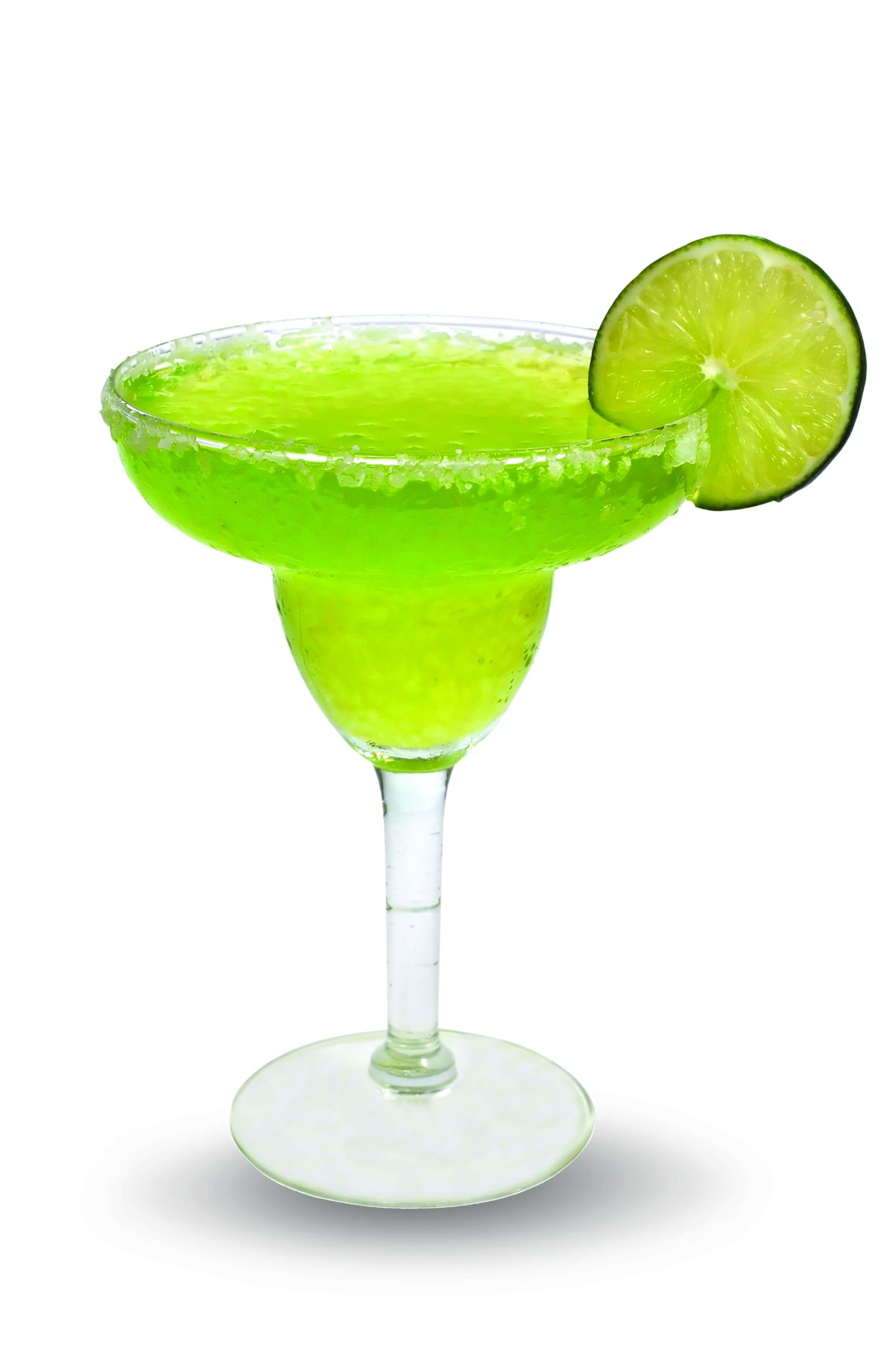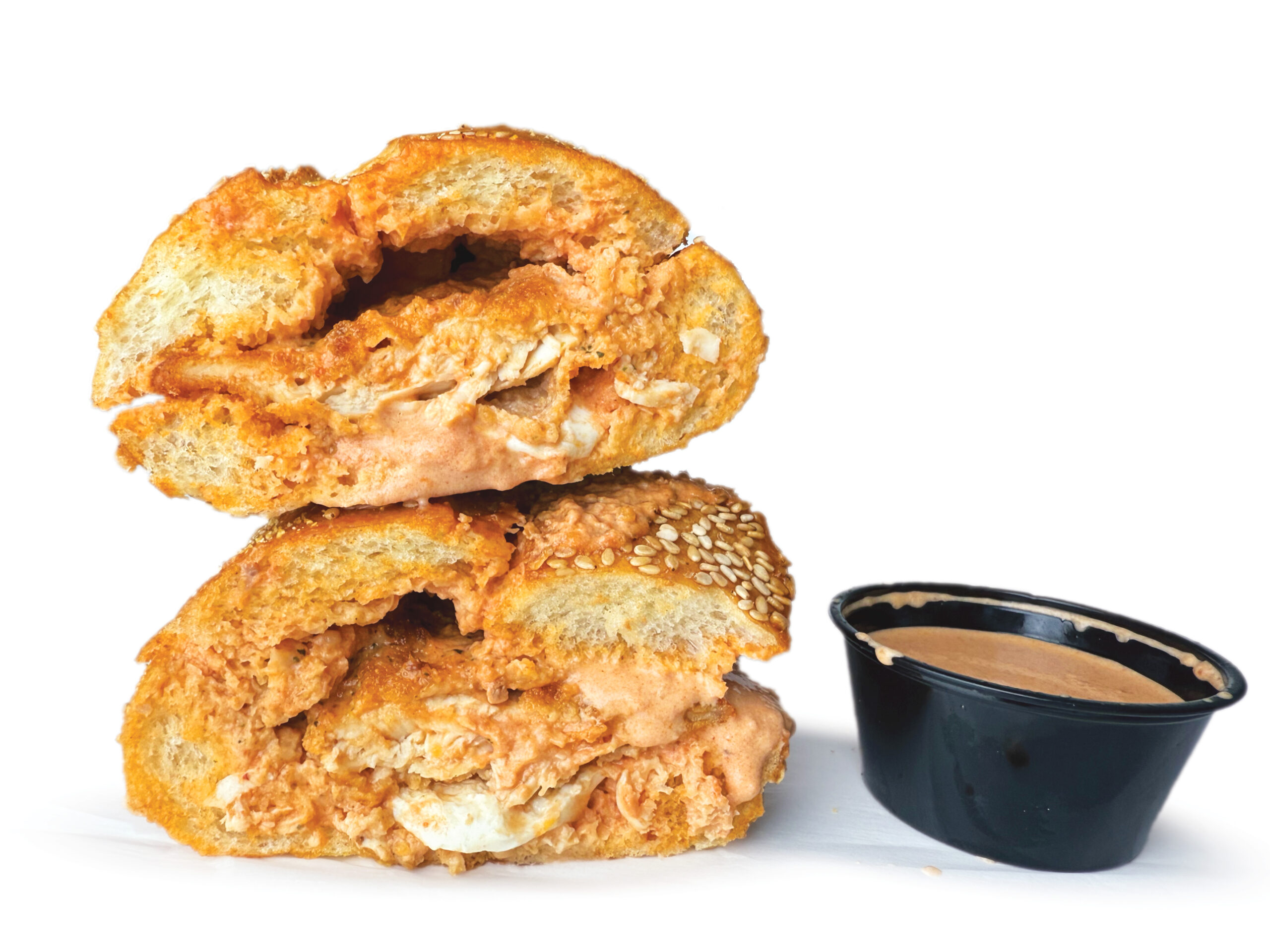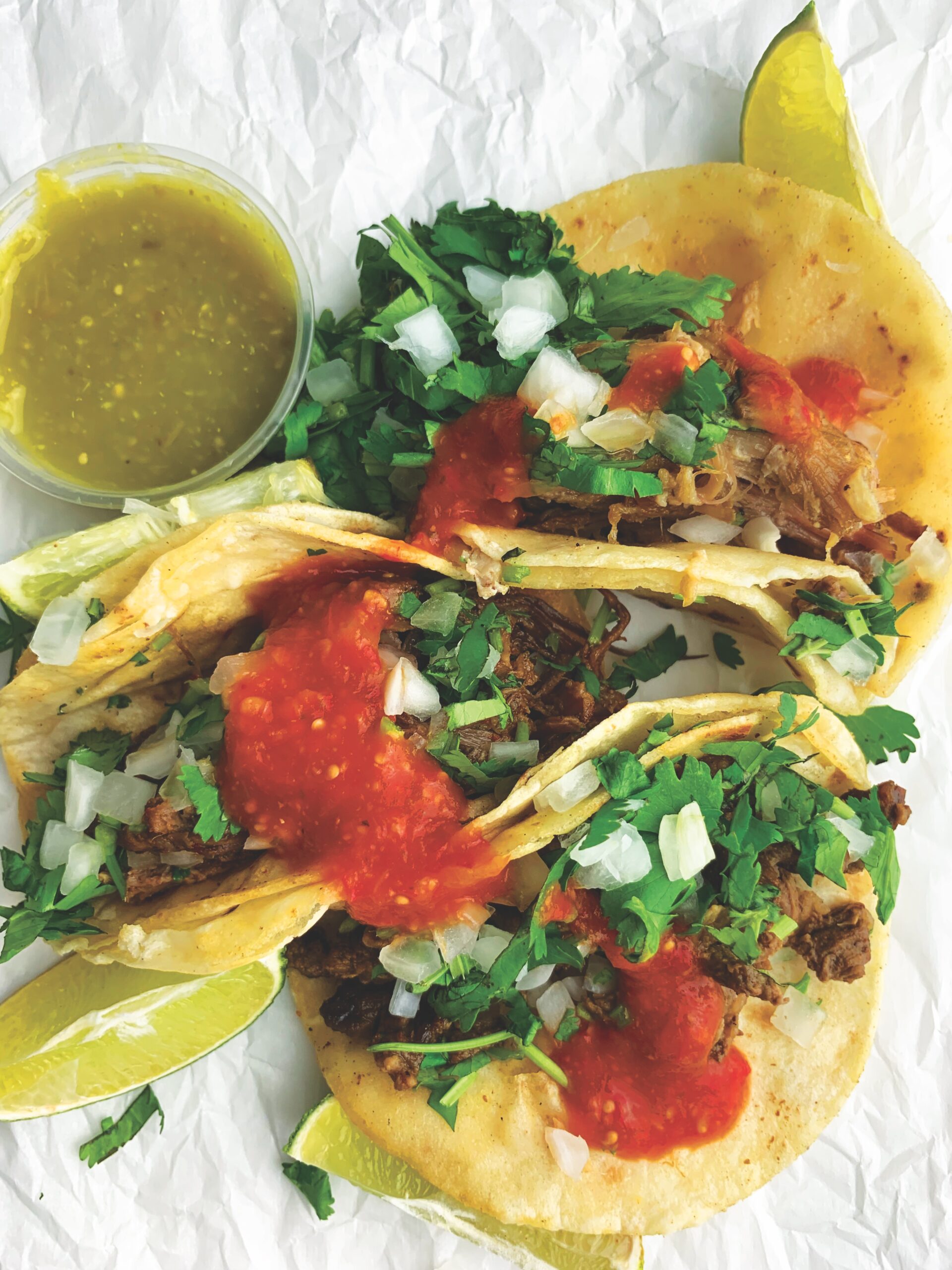By David Ehrenfried

It’s the season for trying something different. When it gets hot outside, our wine preferences often change. My choice is usually a lighter white wine.
A chilled and refreshing white wine that’s thirst-quenching and easy drinking can be very satisfying on such days. Fortunately, there are many delicious and distinctive lighter white wines to choose from. They’re made from various grapes and in many countries and styles. Moreover, most are also relatively inexpensive.
I’m generalizing, but I believe we think about wine differently when it’s hot out. And that, in my opinion, is just as it should be and probably has been since human beings started making wine over 8,000 years ago.
We’ve come a long way in 8,000 years. There are still dry white wines for every palette. France, Spain, Italy, Portugal, Germany, Greece, Austria, Australia, New Zealand, South Africa, Chile, Argentina, and of course, the United States, make vast amounts of different kinds of white wines. No one who enjoys wine should ever feel that their white wine choices are limited to chardonnay, sauvignon blanc, or pinot grigio. Nor should anyone surmise that other white wines are simply variations of these wines with different names. Grapes such as riesling, chenin blanc, and albariño, for instance, each make popular white wines that are unique in their tastes and aromas. Popular white wines like pinot grigio and sauvignon blanc, for example, can be quite different depending on their grapes’ sources and how they were made.

Categories of Lighter White Wines
Very recently, I oversaw a tasting of different lighter white wines that are good choices for summer enjoyment. My goal was to show there are delicious alternatives to the white wines many American wine consumers are most familiar with/ My aim was to familiarize the participants with quality and reasonably priced choices for summer whites and to encourage giving them a try.
I chose just three well-crafted, delicious, and relatively inexpensive light dry white wines for the tasting. Each fell into one of three categories ranging from less tart and acidic to more so. I called the categories: Light and Vibrant; Light and Fresh but Rounded; and Light and Tartly Refreshing. (In case you’re wondering, fuller-bodied white wines like chardonnay and other grapes fall into a different category not discussed here) To represent the first category, I selected a 2020 Vermentino from Italy’s island of Sardinia. For the second, I picked a 2021 Pinot Gris from Oregon’s Willamette Valley. And for the third, I chose a 2020 Grüner Veltliner from Austria’s Kremstal district. These wines had relatively low alcohol content and cost between $15 and $20 per bottle. Most of those wines, summarized below, retail between $10 and $30.
A key attribute of these wines was “freshness.” Nearly everyone can appreciate that term. We intuitively understand the difference between fresh and dated milk and fresh and overripe fruit. To me, freshness in white wine is an appealing combination of lightness, acidity, minerality, and other attributes that quench our thirst. Not surprisingly, such wines are also usually young. Most light whites seem to be within three or four years of the vintage date. After that enough of the acids that give lean whites tart or zesty freshness convert to other compounds, changing the wine’s character.

How Do the Wines Taste?
Sardinian vermentino is typically light, with pleasant floral and citrus scents and mild pear, lemon, melon, grapefruit, or other flavors. It’s freshly acidic and sometimes slightly but enticingly saline, as was the one we tasted called La Cala and made by Sella & Mosca. The La Cala was elegant and straightforward, a wine that could be enjoyed with salad or sandwiches over lunch or a light dinner of simply prepared fish, chicken, or vegetables.
Oregon pinot gris is made from the same kind of grapes grown in Italy to make pinot grigio. The best Oregon versions are enjoyable, fruit-driven, and impeccably well-balanced. The one we tasted was made by Four Graces of the Willamette Valley, which also makes excellent Pinot Noir. It was fresh and tart but softer and rounder than the vermentino. It had peach, citrus and melon flavors. Its slightly greater alcohol content made it feel fuller. It was nearly everyone’s favorite and a good companion for cheese and other appetizers, Cobb salad, raw or prepared seafood, and chicken or pork dishes.
Grüner veltliner (pronounced green-eyr felt-leen-eyr) is definitely in the tartest category. Made from grapes by the same name, Grüner Veltliner is Austria’s most popular wine. The wine we tasted was made by Weingut Forestreiter, one of Austria’s oldest winemakers. It was fresh and energetic wine, slightly effervescent with apple, nectarine, citrus, and herbal flavors, and a perfect companion for sushi, spicy Indian or southeast Asian dishes, sauteed fish, or simply with fresh fruit.

More Delicious Light White Options
I could easily have substituted these wines with ones made with other grapes, such as Alsatian or Italian pinot blanc, French picpoul, or Greek assyrtiko for the first category. Pinot Blanc is one of my favorite white wines; it’s crisp and straight as an arrow in its citrus, apple, pear, and other flavors. Picpoul is a light, understated, and budget-conscious wine from southern France. Assyrtiko, particularly from the island of Santorini, is bone dry with citrus and tropical fruit flavors and slightly saline.
In the second category of slightly fuller, softer and more rounded light whites, here are several other choices: Arneis, from Italy’s Piedmont region, which has bright acidity and stone fruit, apple and pear flavors. Soave, made from the Garganega grape, is a lovely summer wine choice that balances acidity with slight creaminess and a range of fruit and melon flavors. Chenin blanc wines from France or South Africa come in different styles. The leaner versions feature pear, apple, floral aromas and pleasant tartness, and sometimes a bit of cream. Arinto is the foundation of many Portuguese white blends that adds lightness, freshness, and citrus and nut flavors. Falanghina from Campagna in Italy is notable for citrus, stone fruit, and nutty flavors as well as tree blossom aromas.
Finally, here are some other choices in the category of fresh but distinctly tart and tangy light dry white wines. Excellent riesling wines come in many dry to sweeter styles from Germany, Alsace, Austria, New York, Western Australia, and Washington. The lighter styles, which can have citrus, apple, stone fruit, and tropical fruit flavors, are very food flexible. Spanish albariño and Portuguese alvarinho are also notably tart and racy wines with a mixture of citrus flavors, green apple, melon, and nectarine, and sometimes a bit of saline. If you see it, try a bottle of friulano, another lean white wine from northern Italy that often has pear, apple, grapefruit, herbal, and other flavor and tart profile similar to sauvignon blanc.
Last but not least, there’s quality sauvignon blanc. New Zealand is known for its grassy, citrusy sauvignon blanc style, while French sancerre is more straightforward, and French Bordeaux blanc is usually blended with semillon to give it more body and sweetness. California winemakers now make multiple styles of tart, lemony sauvignon blanc, some pricy, and South Africa makes some delicious basic sauvignon blanc wines that are terrific bargains.
Enjoy! And let us know what you think.












